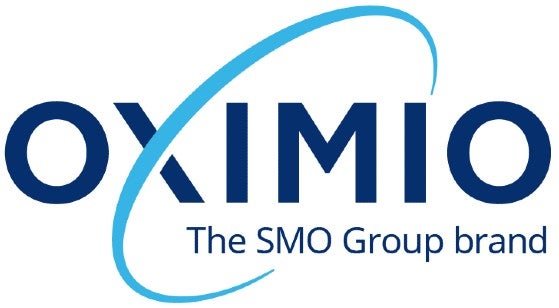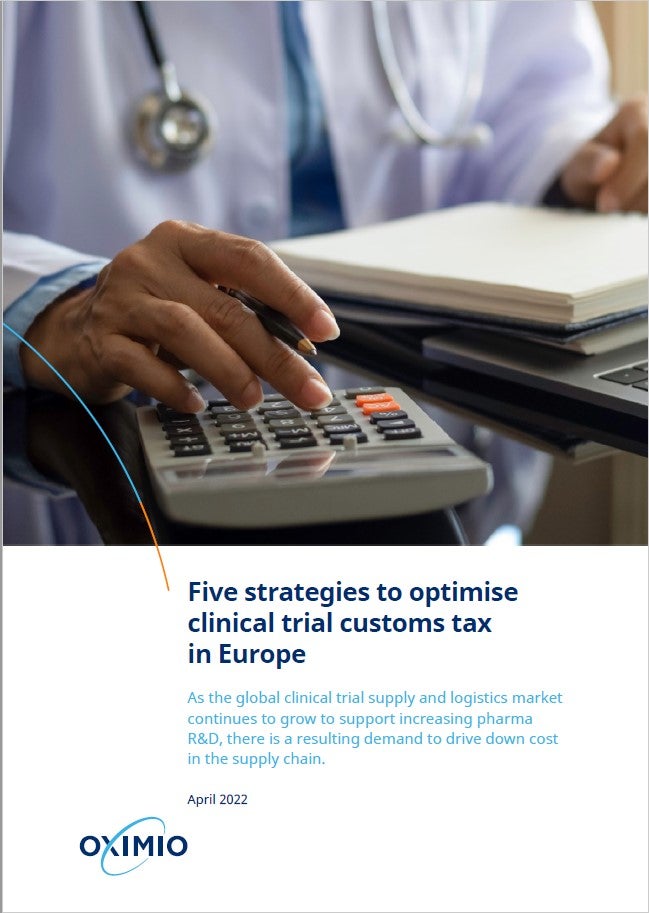
One year on from Brexit, Clinical Trials Arena talks to Oximio about the impact of the trade agreement on clinical trials logistics.
Much of the existing logistics infrastructure was built before Brexit and while the UK has a strong pharma manufacturing base, its logistics model is still designed for the EU market. This article explores the practicalities of a post-Brexit clinical trial landscape for sponsors and CROs, and how any challenges can be overcome.
What is the main impact of Brexit on the European clinical trial market?
Oximio: “As the UK is now a ‘third country’ to the EU, this raised many changes to the pharmaceutical market. Brexit has created a requirement for additional arrangements for clinical trial conduct, such as sponsor location, MAH/MIA/QP requirements, applications, pharmacovigilance, and supply chain.
UK-based CROs can no longer conduct clinical trials in the EU on behalf of sponsors from the US or other non-European locations. However, EU sponsors or CROs based in the EU can conduct medicinal product clinical trials in both the EU and the UK. We’ve seen that there is inclination to include UK sites for sponsors located in non-EU/EEA countries.”
So will the UK be considered in the same way for multi-site EU trials?
Oximio: “The complexity of conducting pan-European clinical trials including the UK has grown following Brexit. Meanwhile, the Clinical Trials Regulation has simplified the process for trials to be conducted across multiple EU member states.
Essentially, the post-Brexit landscape means the planning and successful implementation of clinical trials in the EU and UK may be more time consuming and costly than running a study in an EU country.”
In what ways has the UK market had to adapt to new regulations?
Oximio: “The main change for the UK market is the need to duplicate major processes and requirements of MHRA/ EMA, including essential items like the obligation to keep a separate UK Marketing Authorisation Holder (MAH) for UK products. The UK can no longer be a Reference Member State (RMS) or Concerned Member State (CMS) and requires a separate UK application.
The UK can also now no longer solely use the EU portals (the new Clinical Trials Information System), and must instead use the MHRA gateway – the standalone medicines and medical devices regulator for the UK. The benefit of the new CTI system means sponsors and CROs can apply for clinical trial authorisation in up to 30 EEA countries with a single application, making it easier for trials to be conducted in the EU across multiple member states. Meanwhile, submissions in the UK should be conducted separately via the MHRA, and as such will not benefit from this updated and simplified process.
In addition, marketing authorisation holders have increased responsibilities in terms of assuring the ongoing safety of marketed products in both regulatory systems. They are required to keep two pharmacovigilance system master files (PSMF) up to date. And while the UK allows the qualified person for pharmacovigilance (QPPV) to be located in the EU or EEA, it is still important to define a national contact for pharmacovigilance in the UK.”
How has distribution from the UK to the EU changed?
Oximio: “All imported products from the UK to the EU must now be re-tested and certified on importation in the EU by a QP named EU MIA. If the product was manufactured in Ireland, it can still be processed with no certification. Products exported from the UK to the EU that were previously sent to the Wholesale Distributor (WHA), should now go to the EU holder of MIA.
A lot of companies decided to reorganise their supply chain to address the needs of their trial. If the product is coming from India, the constraints mean that it makes less sense to first import it to the UK and then ship it to the EU. Instead, companies are more likely to first ship it to the EU for certification and then to the UK.
As a result, we are now seeing a change in the split of the protocols based on the origin of the product and sponsor, where all non-EEA IMPs are allocated to the EU packaging and distribution hubs and the UK remains for UK distribution or usage for the EU.”
Can you tell me more about the impact on supply chains?
Oximio: “The regulatory changes are prompting distribution companies and sponsors to reorganise their supply chains and distribution governance to allow GMP/MIA licensed facilities in the EU zone to handle deliveries as normal. Some CMOs chose to reduce their presence in the UK and extend their capabilities in the EU.
All of that resulted in a shortage of GMP capacities in the EU and increased costs for the QPs. That, in turn, increased the overall level of GMP outsourcing and encouraged new ways of handling business in EU.”
How can CT organisers overcome these potential logistics challenges?
Oximio: “The ideal way to overcome the challenges is to deal with partners who have enough capacity in the EU and ideally a presence in both the UK and EU. It is essential for vendors to keep track of changing regulatory frameworks and govern partners through the complex process of getting products to patients.”
How will the UK remain internationally competitive post-Brexit?
Oximio: “As every clinical project is different, sponsors must carefully select the right European countries to bring the clinical trial to successful completion. This success depends on many aspects, including not only the availability of patients in the respective countries but also the availability of dedicated investigators and the treatment praxis. The UK will remain an important player from a health economics point of view.”



